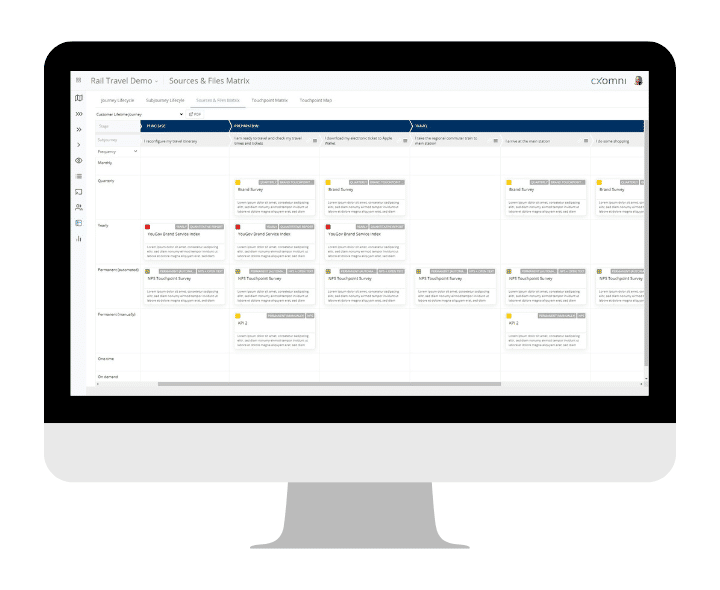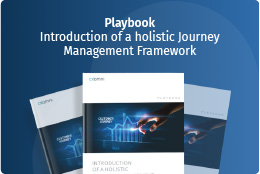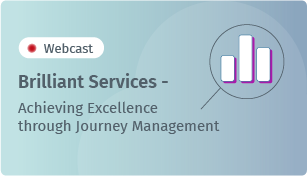Data is the raw material for insights: With data, companies understand what happens along the customer journey. And with the right data analysis, they can find out which channels customers use, how they react to marketing campaigns, and which products or services they prefer. But what are the right data sources? That’s what we want to discuss in this blog post.
Data continually brings fresh insights to journey maps
Strictly speaking, journey mapping only makes sense if journeys are evaluated and analyzed. Because the visualization of customer data along a journey map makes the topic understandable even for non-analysts: The consistent sharing of insights e.g. ensures a better understanding of the customer and quickly makes clear which (sub-)journeys work well and where optimizations are necessary.
Important cross-channel sources of CX data include the following:
- Website Analytics: With Google Analytics, CX teams can generate data analytics on page views, impressions, time spent, and click paths that show how customers behave online.
- CRM: These databases include all the information about customer profiles, interactions, and transactions. For example, CRM systems can show which products or services are most popular and should be promoted more heavily.
- Social media analysis: Social listening is especially useful in these channels, since there is a lively discussion about products and services among the target group.
- Email marketing: Email campaigns provide data on e.g. open and click rates and are an important indicator of target group preferences.
- Sales data: Transactional data, sales histories and conversions help to better understand the buyer journey.
- Customer surveys and feedback: Company surveys or data from external review sites gather direct feedback from customers.
Managing data with Journey Management Software:
How it Works!
Of course, data from various sources need to be normalized and structured. And this is where Journey Management systems come into play. In cxomni, for example, customer journey and touchpoints form a data framework. More than 20 APIs enable the integration, aggregation and normalization of information from the above data sources. This approach creates a context for a holistic CX understanding.
In addition, this data can be refined with sentiment or topic cluster analysis for further insights into customer behavior and intent. Due to the data integration in cxomni, organizational silos within the company do not need to be restructured, and the responsibility to measure and analyze remains with the appropriate managers and third-party systems.

Emotional Data Journey in cxomni based on feedback data
The information flow concept: Framework for smart data management
To ensure that these processes run smoothly and that the right data sources are integrated, a concept for aggregating and distributing information and insights is required. In addition to CX teams, this often requires tIT business partners who identify and implement technical systems and interfaces across departments. So this step doesn’t include a detailed description of interfaces, data dimensions, dashboards or access rights, but the identification and description of
- data sources and insight types
- forms of presentation
- audience
- user stories
The aggregation and distribution of insights is then managed in the softwares’ journey dashboards. Filtering options should be based on the logic of each customer journey and its moments-that-matter. Journey dashboards also define which KPIs should trigger which actions at a touchpoint. For example, at what CSAT score is customer satisfaction at such a high risk that urgent action is required? This way, effective data management enables companies to optimize their strategies, better serve their customers, and drive business success.
Conclusion: Data is the prerequisite for optimized CX strategies
Let’s summarize: A properly set up Journey Management ensures the continuous use of journey insights. It fosters customer-centric collaboration by connecting departments and their individual initiatives into a bigger picture. Meaningful data sources that capture customer behavior along their journey or provide their feedback on a touchpoint experience are key. By using a Journey Management software, CX teams can process this data transparently and gain authentic insights into the performance of a customer journey. This allows companies not only to validate the assumptions of Journey Mapping, but also to take action to ensure the best possible customer experience.







